Traduzione generata automaticamente
Mostra originale
Mostra traduzione
Gorbals Boys (1948) - Silver Gelatin Fibre Print (Photo by Bert Hardy/Getty Images Archive London) Possibly Bert Hardy's most famous image. Two boys in the Gorbals area of Glasgow. The Gorbals tenements were built quickly and cheaply in the 1840s, providing housing for Glasgow's burgeoning population of industrial workers. Conditions were appalling; overcrowding was standard and sewage and water facilities inadequate. The tenements housed about 40,000 people with up to eight family members sharing a single room, 30 residents sharing a toilet and 40 sharing a tap. By the time this photograph was taken 850 tenements had been demolished since 1920. Redevelopment of the area began in the late 1950s and the tenements were replaced with a modern tower block complex in the sixties. Original Publication: Picture Post - 4499 - The Forgotten Gorbals - pub. 1948 Additional Information: Unframed Paper Size: 20 x 16'' inches / 51 x 41 cm Printed 2024 Silver Gelatin Fibre Print Limited edition issued and stamped on front by the Getty Archive London Edition size 300 only NOTE OTHER SIZES OF THIS IMAGE AVAILABLE 10 x 8'' 10 x 12'' 12 x 16'' 16 x 20'' 20 x 24'' Bert Hardy Albert William Thomas Hardy (19 May 1913 – 3 July 1995) was an English documentary and press photographer known for his work published in the Picture Post magazine between 1941 and 1957. Life and work Born in Blackfriars, Bert Hardy rose from humble working class origins in Southwark, London. The eldest of seven children, he left school at age 14 to work for a chemist who also processed photos. His first big sale came in 1936 when he photographed King George V and Queen Mary in a passing carriage during the Silver Jubilee celebrations, and sold 200 small prints of his best view of the King. His first assignment, at age 23, was to photograph Hungarian actor Sakall at the Mayfair Hotel. Hardy freelanced for The Bicycle magazine, and bought his first small-format 35 mm Leica. He signed on with the General Photographic Agency as a Leica photographer, later founding his own freelance firm, Criterion. General Photographic Agency General Photographic Agency a Fleet Street, London agency, sold photos at least between 1880-1950. Picture Post and World War II In 1941, Hardy was recruited by the then editor Tom Hopkinson of the leading picture publication of the 1930s to the 1950s, Picture Post. Founded in 1938 and funded by publisher Edward Hulton, the magazine's first editor was Hungarian émigré Stefan Lorant (1901–97) assisted by Hopkinson, who took over as editor from 1940. The picture-centric, left-leaning and reasonably-priced publication was highly successful and circulation soon rose to over a million. Hardy's photographer colleagues included Felix H. Man (aka Hans Baumann), John Chillingworth, Thurston Hopkins, Kurt Hutton, Leonard McCombe, Francis Reiss, Humphrey Spender, Grace Robertson and Bill Brandt, who went out with the writers on stories together, working as colleagues, not competitors. Hardy was self-taught and used a Leica—unconventional gear for press photographers of the era— but went on to become the Post's Chief Photographer, after he earned his first photographer credit for his 1 February 1941 photo-essay about Blitz-stressed fire-fighters. Hardy served as a war photographer in the Army Film and Photographic Unit (AFPU) from 1942 until 1946: he took part in the D-Day landings in June 1944; covered the liberation of Paris; the allied advance across the Rhine; and was one of the first photographers to enter the liberated Belsen to record the suffering there. He also saved some Russian slaves from a fire set by German police in the city of Osnabrück, before photographing the aftermath. Near the end of World War II, Hardy went to Asia, where he became Lord Mountbatten's personal photographer. He later went on to cover the Korean War along with journalist James Cameron for Picture Post, reporting on atrocities committed by Syngman Rhee's police under the United Nations flag at Pusan in 1950, and later on that war's turning point, the Battle of Inchon, photojournalism for which he won the Missouri Pictures of the Year Award, "obtaining pictures of the landing at Inchon as, unlike other members of the press, Hardy could shoot 1/15 sec at fl.5 with his Leica miniature". Late career Hardy stayed on until Picture Post ceased publication in June 1957. It succumbed to the rise of television and falling circulation, and its increasingly unpopular identification with Labour's 'New Britain' and 'Fair Shares for All'; the party being defeated in the 1951 election.[15] There being no other outlets for photojournalists, Hardy became an advertising photographer before giving the medium up altogether to become a farmer in 1964. Recognition Three of Hardy's photos were used in Edward Steichen's famous The Family of Man exhibition and book; two were taken in Burma, including one of a monk at his desk in deep thought. Another shows a young couple, much in love and relaxing by the window of a tiny basement flat, photographed for part of a feature in Picture Post magazine, 'Scenes from The Elephant', published 8 January 1949, on everyday life in the Elephant and Castle district of South London. According to Hardy, the man in that portrait was a Canadian recently released from prison who had just spent a night with the prostitute in the photographer's image. One of his most famous, and Hardy long claimed his favorite, photo, shows two street urchins off on a lark in Gorbals, an image which has come to represent Hardy's keenest documentary skill. He said he liked it so much because it represented his own rough-and-tumble upbringing, with Glasgow's Gorbals very much resembling London's Elephant & Castle District. Hardy himself was photographed many times, including during the war; three very good photo-portraits of him are currently in the Photographs Collection of the National Portrait Gallery. Having written an article for amateur photographers suggesting that you didn't need an expensive camera to take good pictures, Hardy staged a carefully posed photograph of two young women sitting on railings above a breezy Blackpool promenade using a Box Brownie in 1951, a photograph which has since become an iconic image of post-war Britain. Just before Picture Post closed, Hardy took 15 photos of the Queen's entrance at the Paris Opera on 8 April 1957, which were assembled as a photo-montage by the magazine's technicians. It was one of the most challenging photo-montages ever created, because there were a sizeable live crowd, guards, and other dignitaries, in front of his camera. After leaving Picture Post Hardy became one of the most successful advertising photographers until his retirement in 1964 to his farm in Oxted. His second wife, Sheila, was a photo researcher for Picture Post and still holds the copyright to his private collection of photos; Getty Images holds the copyright to his Picture Post works. A memorial plaque honouring him is in the journalists' church, St Bride's, Fleet Street, London. In October 2008, London Borough of Southwark unveiled a Blue Plaque on Bert Hardy's family home at The Priory, Webber Street, Southwark. The plaque was erected following a popular vote.
Gorbals Boys (1948) - Stampa alla gelatina d'argento (Foto di Bert Hardy/Getty Images Archive London) Forse l'immagine più famosa di Bert Hardy. Due ragazzi nel quartiere Gorbals di Glasgow. Le case popolari di Gorbals furono costruite rapidamente e a basso costo negli anni Quaranta del XIX secolo, per fornire alloggi alla crescente popolazione di lavoratori industriali di Glasgow. Le condizioni erano terribili: il sovraffollamento era standard e le strutture fognarie e idriche inadeguate. Le case popolari ospitavano circa 40.000 persone, con un massimo di otto membri della famiglia che condividevano una singola stanza, 30 residenti che condividevano un bagno e 40 che condividevano un rubinetto. Al momento dello scatto di questa fotografia, 850 tenements erano stati demoliti dal 1920. La riqualificazione dell'area è iniziata alla fine degli anni Cinquanta e negli anni Sessanta i tenements sono stati sostituiti da un moderno complesso di grattacieli. Pubblicazione originale: Picture Post - 4499 - The Forgotten Gorbals - pub. 1948 Informazioni aggiuntive: Senza cornice Formato carta: 20 x 16'' pollici / 51 x 41 cm Stampa 2024 Gelatina d'argento in fibra Edizione limitata emessa e timbrata sul fronte dal Getty Archive di Londra Edizione solo 300 NOTA ALTRI FORMATI DI QUESTA IMMAGINE DISPONIBILI 10 x 8'' 10 x 12'' 12 x 16'' 16 x 20'' 20 x 24'' Bert Hardy Albert William Thomas Hardy (19 maggio 1913 - 3 luglio 1995) è stato un fotografo documentarista e giornalista inglese, noto per il suo lavoro pubblicato sulla rivista Picture Post tra il 1941 e il 1957. Vita e lavoro Nato a Blackfriars, Bert Hardy è cresciuto da umili origini operaie a Southwark, Londra. Primogenito di sette figli, lascia la scuola all'età di 14 anni per lavorare presso un chimico che si occupa anche di fotografia. La sua prima grande vendita avvenne nel 1936, quando fotografò il re Giorgio V e la regina Mary in una carrozza di passaggio durante le celebrazioni del Giubileo d'argento, e vendette 200 piccole stampe della sua migliore immagine del re. Il suo primo incarico, all'età di 23 anni, fu quello di fotografare l'attore ungherese Sakall al Mayfair Hotel. Hardy lavora come freelance per la rivista The Bicycle e acquista la sua prima Leica 35 mm di piccolo formato. Firmò con la General Photographic Agency come fotografo Leica e in seguito fondò la sua società di freelance, Criterion. General Photographic Agency La General Photographic Agency, un'agenzia di Fleet Street, Londra, ha venduto fotografie almeno tra il 1880 e il 1950. Picture Post e la Seconda guerra mondiale Nel 1941, Hardy fu assunto dall'allora direttore Tom Hopkinson della principale pubblicazione fotografica degli anni Trenta e Cinquanta, Picture Post. Fondata nel 1938 e finanziata dall'editore Edward Hulton, il primo direttore della rivista fu l'emigrato ungherese Stefan Lorant (1901-97), coadiuvato da Hopkinson, che ne assunse la direzione dal 1940. La pubblicazione, incentrata sulle immagini, orientata a sinistra e a prezzi ragionevoli, ebbe un grande successo e la tiratura salì presto a oltre un milione di copie. Tra i colleghi fotografi di Hardy c'erano Felix H. Man (alias Hans Baumann), John Chillingworth, Thurston Hopkins, Kurt Hutton, Leonard McCombe, Francis Reiss, Humphrey Spender, Grace Robertson e Bill Brandt, che uscivano insieme agli scrittori per le storie, lavorando come colleghi, non come concorrenti. Hardy era un autodidatta e usava una Leica - un'attrezzatura non convenzionale per i fotografi della stampa dell'epoca - ma divenne il capo fotografo del Post, dopo essersi guadagnato il suo primo credito di fotografo per il suo saggio fotografico del 1° febbraio 1941 sui vigili del fuoco sottoposti a stress da Blitz. Hardy prestò servizio come fotografo di guerra nell'Unità Cinematografica e Fotografica dell'Esercito (AFPU) dal 1942 al 1946: partecipò allo sbarco del D-Day nel giugno 1944, coprì la liberazione di Parigi, l'avanzata alleata attraverso il Reno e fu uno dei primi fotografi a entrare nella liberata Belsen per registrarne le sofferenze. Salvò anche alcuni schiavi russi da un incendio appiccato dalla polizia tedesca nella città di Osnabrück, prima di fotografarne le conseguenze. Verso la fine della Seconda guerra mondiale, Hardy si recò in Asia, dove divenne il fotografo personale di Lord Mountbatten. In seguito, insieme al giornalista James Cameron, coprì la guerra di Corea per Picture Post, raccontando le atrocità commesse dalla polizia di Syngman Rhee sotto la bandiera delle Nazioni Unite a Pusan nel 1950, e successivamente il punto di svolta di quella guerra, la battaglia di Inchon, fotogiornalismo per il quale vinse il Missouri Pictures of the Year Award, "ottenendo immagini dello sbarco a Inchon poiché, a differenza di altri membri della stampa, Hardy era in grado di scattare 1/15 sec a fl.5 con la sua Leica miniatura". A fine carriera Hardy rimase fino a quando il Picture Post cessò le pubblicazioni nel giugno 1957. Il giornale ha ceduto all'ascesa della televisione e al calo della tiratura, nonché alla sua identificazione sempre più impopolare con la "New Britain" e la "Fair Shares for All" dei laburisti, che sono stati sconfitti alle elezioni del 1951.[15] Non essendoci altri sbocchi per i fotoreporter, Hardy è diventato un fotografo pubblicitario prima di abbandonare del tutto il mezzo per diventare un agricoltore nel 1964. Riconoscimento Tre foto di Hardy sono state utilizzate nella famosa mostra e nel libro di Edward Steichen The Family of Man; due sono state scattate in Birmania, tra cui quella di un monaco alla sua scrivania in profonda riflessione. Un'altra mostra una giovane coppia, molto innamorata, che si rilassa vicino alla finestra di un minuscolo appartamento seminterrato, fotografata per una parte di un servizio della rivista Picture Post, "Scenes from The Elephant", pubblicato l'8 gennaio 1949, sulla vita quotidiana nel quartiere Elephant and Castle di Londra sud. Secondo Hardy, l'uomo ritratto era un canadese appena uscito di prigione che aveva appena trascorso una notte con la prostituta ritratta dal fotografo. Una delle sue foto più famose, e che Hardy ha a lungo dichiarato essere la sua preferita, mostra due monelli di strada che si divertono a Gorbals, un'immagine che è diventata il simbolo della più spiccata abilità documentaristica di Hardy. Hardy ha dichiarato che gli piaceva così tanto perché rappresentava la sua stessa educazione rude e disordinata, con i Gorbals di Glasgow che assomigliavano molto al quartiere Elephant & Castle di Londra. Hardy stesso è stato fotografato molte volte, anche durante la guerra; tre suoi ottimi ritratti fotografici sono attualmente conservati nella Photographs Collection della National Portrait Gallery. Dopo aver scritto un articolo per i fotografi dilettanti in cui suggeriva che non era necessario possedere una macchina fotografica costosa per scattare buone foto, nel 1951 Hardy ha scattato con una Box Brownie un'accurata fotografia di due giovani donne sedute su una ringhiera sopra un ventilato lungomare di Blackpool, una fotografia che da allora è diventata un'immagine iconica della Gran Bretagna del dopoguerra. Poco prima della chiusura del Picture Post, Hardy scattò 15 foto dell'ingresso della Regina all'Opera di Parigi l'8 aprile 1957, che furono assemblate come fotomontaggio dai tecnici della rivista. Si trattava di uno dei fotomontaggi più impegnativi mai realizzati, perché davanti alla sua macchina fotografica c'erano una folla numerosa, guardie e altri dignitari. Dopo aver lasciato il Picture Post Hardy divenne uno dei fotografi pubblicitari di maggior successo fino al suo ritiro nel 1964 nella sua fattoria di Oxted. La sua seconda moglie, Sheila, era una ricercatrice fotografica per Picture Post e detiene ancora i diritti d'autore della sua collezione privata di foto; Getty Images detiene i diritti d'autore delle sue opere Picture Post. Una targa commemorativa in suo onore si trova nella chiesa dei giornalisti, St Bride's, Fleet Street, Londra. Nell'ottobre 2008, il London Borough of Southwark ha inaugurato una targa blu sulla casa di famiglia di Bert Hardy, The Priory, Webber Street, Southwark. La targa è stata eretta a seguito di una votazione popolare.
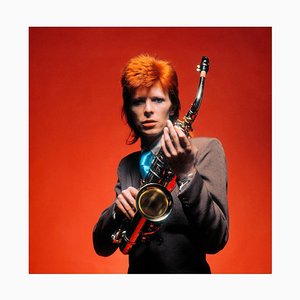
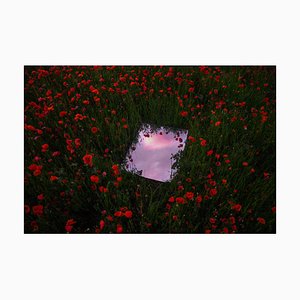


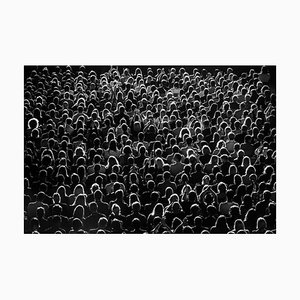

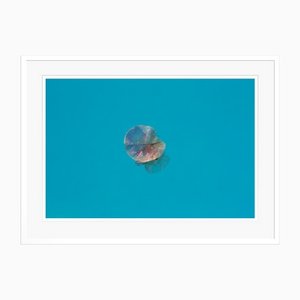
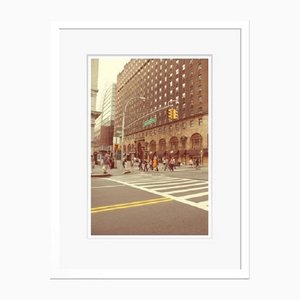
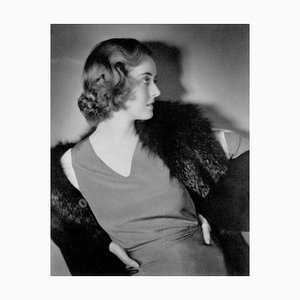

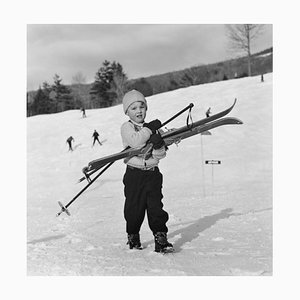

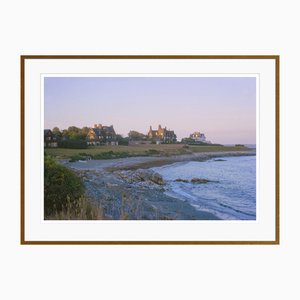

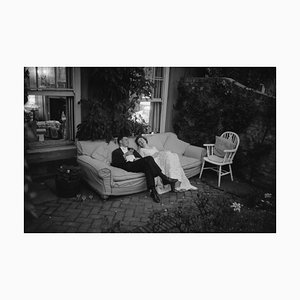

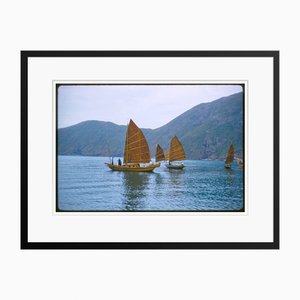
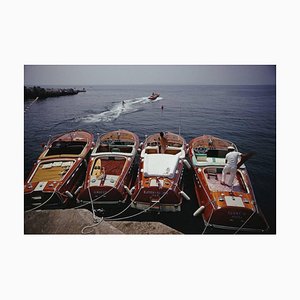
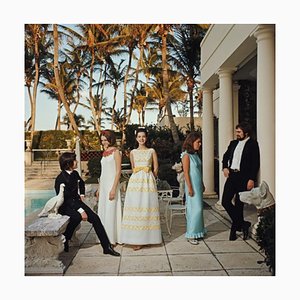
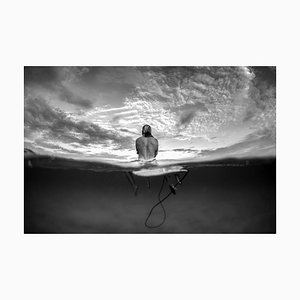
Contattaci
Fai un'offerta
Abbiamo notato che sei nuovo su Pamono!
Accetta i Termini e condizioni e l'Informativa sulla privacy
Contattaci
Fai un'offerta
Ci siamo quasi!
Per seguire la conversazione sulla piattaforma, si prega di completare la registrazione. Per procedere con la tua offerta sulla piattaforma, ti preghiamo di completare la registrazione.Successo
Grazie per la vostra richiesta, qualcuno del nostro team vi contatterà a breve.
Se sei un professionista del design, fai domanda qui per i vantaggi del Programma Commerciale di Pamono